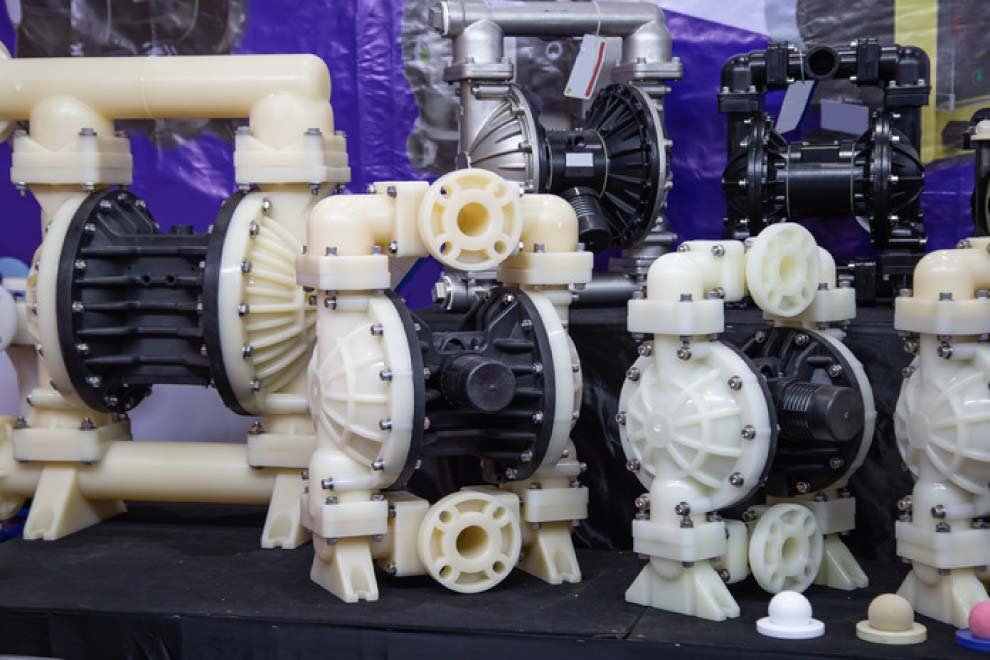Diaphragm pumps have made significant technological strides, becoming an essential piece of equipment across several industries. These pumps employ a simple mechanism of action, yet they are the backbone of many complex and critical systems. As an advanced piece of machinery, a diaphragm pump offers many features and applications.
Visiting a professional supplier’s website can be beneficial for a deeper understanding of diaphragm pumps. Industry leaders like knf.com/en/uk provide detailed insights into diaphragm pumps’ workings, features, and applications. As we delve into the world of these sophisticated pumps, let’s explore seven advanced features and applications that set them apart.

1. High Chemical Resistance
Diaphragm pumps are renowned for their exceptional chemical resistance, allowing them to handle a wide range of fluids, including corrosive and abrasive materials. This is made possible by the use of specialized construction materials like PTFE (polytetrafluoroethylene), which ensures the pump’s longevity and reliability even in harsh conditions. With their high chemical resistance, diaphragm pumps are the ideal choice for industries that require the handling of corrosive or abrasive fluids.
2. Explosion-Proof Models
Another significant feature of diaphragm pumps is their availability in explosion-proof models. These pumps are specially designed to handle volatile and flammable substances, making them ideal for use in hazardous environments such as the oil and gas industries. Their construction is designed to limit the chances of ignition, ensuring safe operations. With explosion-proof diaphragm pumps, you can confidently handle volatile substances, knowing that the risk of explosion is minimized.
3. Pulseless Flow
Another essential feature of diaphragm pumps is their ability to provide a smooth, pulseless liquid flow. Unlike other pumps, diaphragm pumps can deliver a consistent and steady flow, making them ideal for sensitive applications such as medical and laboratory equipment.
The pulseless flow feature ensures that the flow is smooth and consistent, which is essential in applications where precision and accuracy are paramount. With diaphragm pumps, you can achieve the desired flow rate without any pulsation, ensuring that your processes are efficient and reliable.
4. Self-Priming And Dry Running
Diaphragm pumps are equipped with two impressive features: self-priming and dry-running capabilities. This means that they can operate without the need for external priming and can continue to function even when there is little or no fluid in the system.
These features make diaphragm pumps highly suitable for applications with intermittent flow needs, such as chemical dosing or water treatment. With self-priming and dry-running capabilities, diaphragm pumps offer efficient and reliable performance, ensuring that your processes continue uninterrupted.
5. Food And Beverage Industry Applications
Diaphragm pumps have found a niche in the food and beverage industry due to their ability to handle a variety of fluid viscosities and maintain the integrity of sensitive fluids such as dairy products or brewed beverages.
These pumps are essential to maintaining the quality and safety standards of the food and beverage industry. With their precision and reliability, diaphragm pumps are ideal for applications such as transferring fluids, dosing ingredients, and handling food-grade liquids. In the food and beverage industry, diaphragm pumps play a crucial role in ensuring the quality and safety of the products produced.
6. Pharmaceutical And Biotech Applications
In the life sciences industry, diaphragm pumps are widely used in the pharmaceutical and biotech sectors for critical applications. These pumps are particularly useful in processes that require sterile environments, where they can handle aggressive chemicals and avoid cross-contamination. With their advanced features and precise fluid handling capabilities, diaphragm pumps play a vital role in ensuring the quality and safety of pharmaceutical and biotech products. In the pharmaceutical and biotech industries, diaphragm pumps are an essential component of many processes, helping to achieve efficient and reliable results.
7. ATEX Certification
Diaphragm pumps that come with ATEX certification are necessary for applications in hazardous environments. ATEX certification is a European Union directive that regulates equipment used in potentially explosive atmospheres. Diaphragm pumps with ATEX certification are specifically designed to operate safely in these environments, reducing the risk of explosions and ensuring the safety of personnel. The certification ensures that the pumps meet a high standard of safety and reliability, making them an essential component in hazardous environments. With ATEX-certified diaphragm pumps, operators can work with confidence, knowing that they are using equipment that meets the highest safety standards.
Conclusion
From the aforementioned points, it’s clear that diaphragm pumps have advanced significantly. They certainly showcase remarkable features, whether they can resist harsh chemicals, have explosion-proof models, or have applications in the food and pharmaceutical industries. While this discussion covers several facets of these pumps, remember that their applications and features can extend far beyond these examples, depending on specific industry needs.
Author Bio:
John Davis is a product manager with over 15 years of experience in the fluid handling industry. John has extensive knowledge of diaphragm pumps and has worked on numerous projects involving the design, development, and marketing of these pumps in various industries.
ALSO READ: Keep your fat in check by Calculating your Body Mass Index










